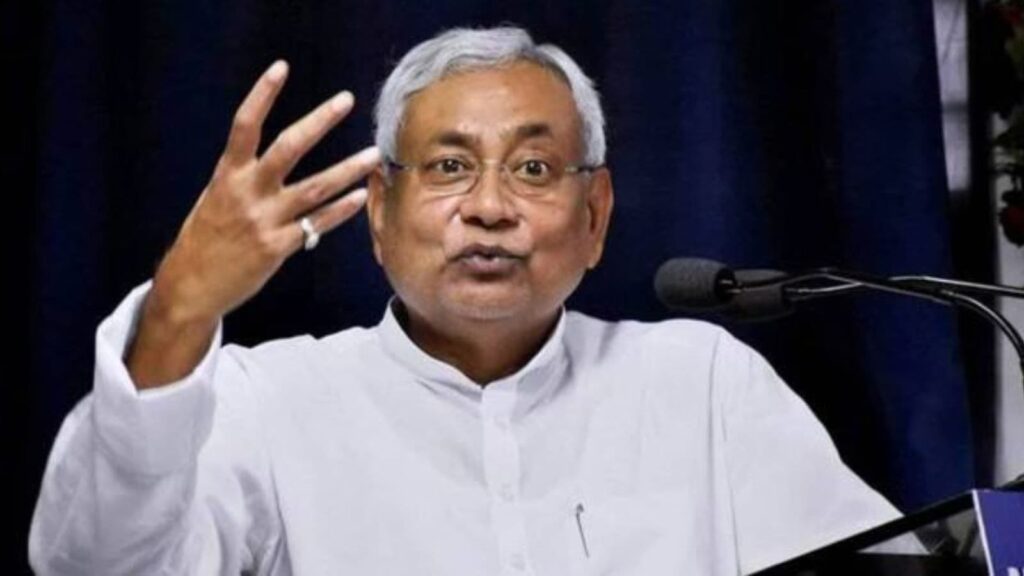With Bihar headed to the Assembly polls on November 6 and 11, Chief Minister and JD (U) president Nitish Kumar, 74, is bracing to lead the NDA into what could be his most challenging contest in his twilight.
Nine-time CM Nitish, who has been grappling with health issues now, has remained at the helm of the Bihar government for about 20 years, which has alternately involved his alliances with the BJP-led NDA as well as the RJD-led Mahagathbandhan that also includes the Congress.
A socialist stalwart, Nitish has played a crucial role in defining the politics of Bihar in recent decades, calling the shots irrespective of his party’s standing.
Key to power
While Nitish first became the CM for a brief stint during March 3-10, 2000, he has been the fulcrum of Bihar politics since 2005. Even for a 278-day hiatus in 2014-15, when he was not the CM, he had handicked his then party colleague Jitan Ram Manjhi to head the government.
Deftly switching from one alliance to the other – which saw five flip-flops in the last 11 years – Nitish has always spearheaded his coalition to victory.
In 2005, when Nitish first became the CM for a full five-year term – the Lalu Prasad-led RJD had won 75 seats in the 243-member House, the JD (U) got 55 and the BJP 37 seats. In the 2010 polls, the JD (U) bagged 115 seats, the BJP 91 and the RJD 22 seats.
In the 2015 polls, when Nitish contested the polls in alliance with the Mahagathbandhan, the RJD won 80 seats, the JD (U) 71 and the BJP 53 seats. In 2020, when he fought the polls in tie-up with the BJP again, the RJD won 75 seats, the BJP 74 and the JD (U) 43 seats.
Outreach to EBCs, women
Aware that his Kurmi community is numerically smaller than Yadavs, which constitute about 3% and 14% of Bihar’s population respectively, Nitish decided to build up his own constituency by putting together his support bases among the EBCs (Extremely Backward Classes), women, and Mahadalits (Dalits except Paswans, though he eventually included Paswans in this too). The Yadav group is known as a dominant caste among the OBCs, although Kurmis are also part of it.
He emerged as a champion of the EBCs, which form about 36% of population, the state’s largest electoral constituency. He has introduced several measures to consolidate his influence within the EBC groups. In 2006, his Cabinet approved 20% reservation for the EBCs in district boards, panchayat samitis, and gram panchayats. In 2010, he announced a new entrepreneurship scheme for the EBCs, wherein eligible members received state assistance of Rs 10 lakh to set up small businesses.
Nitish’s EBC outreach was seen as a response to ally-turned-rival Lalu Prasad’s M-Y (Muslims-Yadavs) base, which had helped the RJD stay in power for 15 years between 1990 and 2005. Lalu’s rise marked the decline of upper-caste dominance in the state, as he rode the Mandal wave that promised social justice for the OBCs. However, a perception gradually grew that the RJD government “favoured” Yadavs and Ashraf (forward class) Muslims.
Nitish’s long tenure as the CM had a catalytic effect in making several backward groups more aspirational. He sought to make the EBCs aware that they were not the “real beneficiaries” of the RJD regime, but Yadavs.
The 2023 Bihar caste survey, which was driven by Nitish when he was heading the Mahagathbandhan government, highlighted the electoral significance of the EBCs, showing them to be just above Dalits in terms of landholding and wealth. Following this exercise, Nitish decided to hike the quotas for the SCs, STs, OBCs and EBCs from 50% to 65%. His government also passed a legislation to ensure it, which was however struck down by the Patna High Court.
By establishing his vote base among the EBCs, Nitish became a desired ally for both the BJP and the RJD.
JD(U) working president Sanjay Jha said Nitish also created his “distinct political constituency among women of the state”. “In the last 20 years, Nitish Kumar has touched every woman’s life. 1.4-lakh Jeevika Didis of poor families are there, making it the largest self-help group (SHG) system. He has done their economic empowerment. He has contributed to their education by giving them bicycles and other schemes. He also ensured 50% women reservation in panchayats,” Jha told The Indian Express.
“Bihar has highest number of women in the police service. Nitish Kumar also enforced prohibition on the demand of women. He has thus changed the lives of half the state’s population,” he said.
‘Sushasan Babu’
Nitish’s initial stints as the CM focused on improving law and order and infrastructure in the state, with the NDA camp fuelling a perception that his governance managed to “reverse” the RJD regime’s “jungle raj” (lawlessness) and put the state back on the development track.
He was projected as “Sushasan (good governance) Babu” across India. With the slogan “Bihar mein bahar hai, Nitish Kumar hai” (There is spring in Bihar, it still has Nitish Kumar) gaining traction, he punched far above his electoral heft. Although he was later also dubbed “Paltu Ram” in the wake of his flip-flops, he has still been widely credited with significantly offsetting “negative stereotypes” about Bihar.
He has also enjoyed a clean image, which has set him apart from the Lalu Prasad family which has been under the cloud of multiple corruption charges. Unlike the chiefs of many regional parties, he has not appeared to have indulged in nepotism, refraining from promoting his son Nishant Kumar in public life so far.
For the BJP, Nitish has been an ideological asset, too. The Congress has consistently pushed the narrative that the ideological conflict in the country has been between its secular vision and the BJP’s Hindutva politics. Nitish has regularly sought to neutralise this “ideological binary” by seamlessly shifting from the NDA to the Mahagathbandhan, and back.

